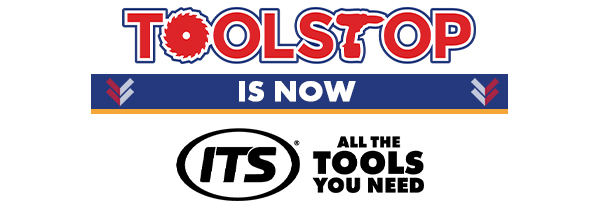IPHONE VS ANDROID, COKE VS PEPSI, MCDONALDS VS BURGER KING, THESE ARE COMMON INDUSTRY BATTLES THAT ARE FOUGHT EVERY DAY TO WIN THE HEARTS AND MINDS OF THE GENERAL PUBLIC.
Have a peek at some tool belts around your site and you’re likely to see a Stanley FatMax tape, an Estwing hammer, and a couple of Wera screwdrivers tucked in there. These are the tools that were declared to be the best in their field and people who aren’t even in the trade will call a retractable knife a “Stanley”. Although many other brands have just as good, and if not better offerings, it is these brands that have developed an almost cult like following with apprentice after apprentice stuffing their belts full of the same gear as everyone else.
When it comes to cordless power tools, the big manufacturers are spending millions of pounds and employing thousands of people to try and convince you that their product is the best and that you should replace all your current tools with the latest version of theirs.
We all know that batteries are the lifeblood of cordless tools. DeWalt were quick to pick up on this and pushed batteries as hard as they could to assert the site dominance they currently enjoy, and Makita were the first to get Lithium ion technology to the masses. The thinking is that if you’ve already got the battery, you’re probably going to get the tool as well as it is a lot easier, and cheaper, to expand your range of tools with body only units.
The thing is though, replacing all your gear with a different brand is not an easy job. If you’ve got a load of DeWalt tools and batteries already then it is unlikely that a Makita circular saw with a slightly more powerful motor is going to prompt you to get all your DeWalt gear on eBay and jump ship. The marketers know this, and they understand that a flashy poster and a loud advert isn’t going to sway you, so they need to offer you something that all the other brands simply can’t.
Let’s take a look at what all of the big players are up to recently in terms of big innovation.
DeWalt
In 2016 DeWalt launched the FlexVolt battery system and it has since proven itself to be a huge leap forward for power tool technology. DeWalt’s UK and ROI Managing Director said:
“To put this simply, the DEWALT XR FlexVolt range is the next chapter in cordless technology. DEWALT is launching a range of tools that are not just extremely powerful – they will also provide in excess of a full day’s runtime on a single charge for most users.
The potential for this technology is limitless: for each and every trade.”
FlexVolt offers corded power in a cordless tool and even if you do not have a FlexVolt tool you can still get a FlexVolt battery, put it on your 18v combi, and you’ll have yourself a shiny new 6Ah battery.
DeWalt seem to have delivered on their promise of realising the tradesman’s dream of all day run time and corded power in a cordless package. DeWalt make a very strong case for themselves and make the idea of ditching your current brand and hopping the fence a lot more tempting.
Milwaukee
Milwaukee have approached the subject of power innovation from the complete opposite direction. Instead of asking Joe Builder to upgrade his van full of very expensive tools, they are saying that he can make the tools he already has work better if he upgrades just his batteries.
The way they have done this is quite ingenious. While DeWalt were beavering away trying to cram as many volts into their batteries as possible, Milwaukee were trying to maximise the number of volts they already had by limiting the resistance.
The result of their tinkering is the M18 HIGH-OUTPUT Battery that touts 50% more power and a much cooler running temperature, so your extra powerful battery has an extra powerful life.
This means that Joe Builder can spend a lot less cash and simply upgrade his batteries and then ALL of the M18 tools he has already purchased will get a massive power boost. Its unlikely that people will switch from FlexVolt to this HIGH-OUTPUT but it is much more likely that people will stick with their M18 tools and enjoy all the benefits. Milwaukee have been very clever indeed.
HiKOKI
HiKOKI is the result of the former “Hitachi Power tools” moving away from the multinational giant “Hitachi” and focusing all their efforts on power tools. Breaking away from the bigger company means HiKOKI can be a lot more reactive in terms of market trends and innovation so we are expecting big things from them in the future but, as for right now, we have their “Multi-Volt” system to enjoy.
The Multi-Volt system works a lot like DeWalt’s FlexVolt range in that you can have 36v power through a 36v tool or an extra long-life battery through an 18v tools. The main difference between the two is that the Multi-Volt battery is the same size and weight as the standard battery whereas the FlexVolt battery is a fair bit heavier.
It is plain to see that HiKOKI were gunning for Makita instead of DeWalt with this as the Multi-Volt system is a bit lacking when compared to FlexVolt, but it does come up a bit cleaner when compared to how Makita have approached the current trend.
Makita
Things have been a bit quieter across the pond with Makita, we haven’t had any flashy adverts or on-site demos or even any whisper that something revolutionary was in the pipework’s. Make of that what you will but what we can say is that Makita approached the “Power Revolution” with a typically Japanese solution. 18 + 18 = 36 so two 18v batteries stuck on the same tool would equal 36v of power and that’s exactly what Makita have done.
Take a look at their new DDA460ZK angle drill. It looks very similar to their other angle drill but it has a great big bit on the back for two batteries. You can plug in a 3Ah 18v battery and a 5Ah 18v battery and you’ll end up with a 36v tool. Is it pretty? Not particularly. Is it simple and effective? Absolutely.
Where is the innovation focused?
Battery technology seems to be where most of the innovation is heading. On the one hand we have DeWalt who are changing the game with an entirely new line designed to attract new customers, there’s Milwaukee who are really pushing their brand loyalty by making their current tools even better, HiKOKI who are trying to impress with a new brand and new tech, and finally Makita who are keeping things as simple as possible.
The focus so far has been on cordless power tools and people invest a lot of their hard-earned cash in their cordless power tools so fierce brand loyalty is to be expected. But what about a tape measure? Or even a screwdriver set? It’s much easier to get yourself a new tape with change from a tenner so how far does brand loyalty stretch?
Sales trends are showing us that what was popular 10 years ago is not so popular today. Could it be because of the innovations we’ve listed above that is causing people to jump ship or could it be a lot simpler? Perhaps people today just prefer Yellow rather than Blue
In Summary
These days it’s never been easier to get on to www.its.co.uk to order all the tools you need from any brand under the sun and you can keep your finger on the pulse of power tool innovation as it happens with a few simple taps. So now we ask you the question: Does brand loyalty still play a part in your power tool decision-making process? Or are you just out to get the biggest bang for your buck?



